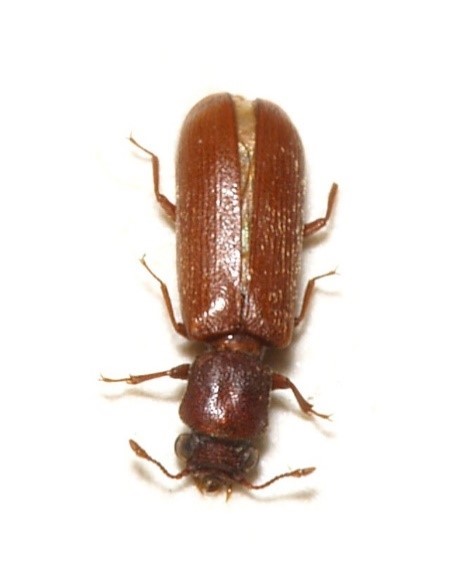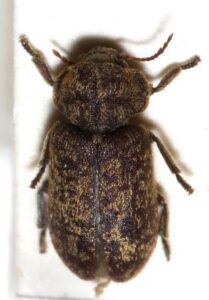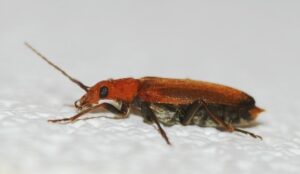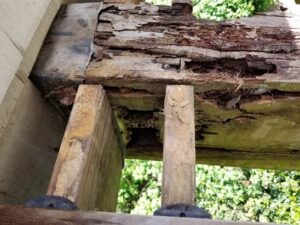Lyctid Powderpost Beetles:
Brown Lyctus Beetle
General Description
| · The adult is 2-6 mm long, rectangular, and brown in color. The color varies from light brown to reddish-brown. The whole head appears in front of the thorax from above. The antennae consist of 11 segments, and the two ends are swollen.
· The larvae are about 0.5 mm long, cream colored with brown heads and jaws, and three pairs of small jointed legs and straight-bodied but later become C-shaped. The respiratory stoma is on the eighth abdominal segment and is distinguished by its clarity and largeness compared to the larvae of the Anobiidae family. |

Credit: Sarefo |
Life Cycle and Common Characteristics
- The insect spends its winter hibernation in the form of larvae inside the tunnels that it makes in the wood.
- In the spring, larvae turn into pupae, and then adults emerge in early summer to mate outside the wood.
- Females lay eggs (maximum of 220 eggs) in pits and cracks on the surface of the wood.
- The eggs hatch after 3-7 days into larvae, which dig tunnels into the sapwood in different directions for one to two years.
- Adults emerge from the infested wood between May and September.
- Maximum life cycle period is 2.5 years.
Damage and Economic Implications
- The species of this family infects home furniture, wood doors, windows, floors, and wooden telephone poles, and prefers to infect dry wood rich in starch.
- Insects can live under the surface of the wood months before it is manufactured, then they make many round and contiguous holes from which they emerge after the wood has been manufactured into furniture. The infestation is characterized by the exit of fine powder from those holes, which have a diameter of 1-2 mm.




